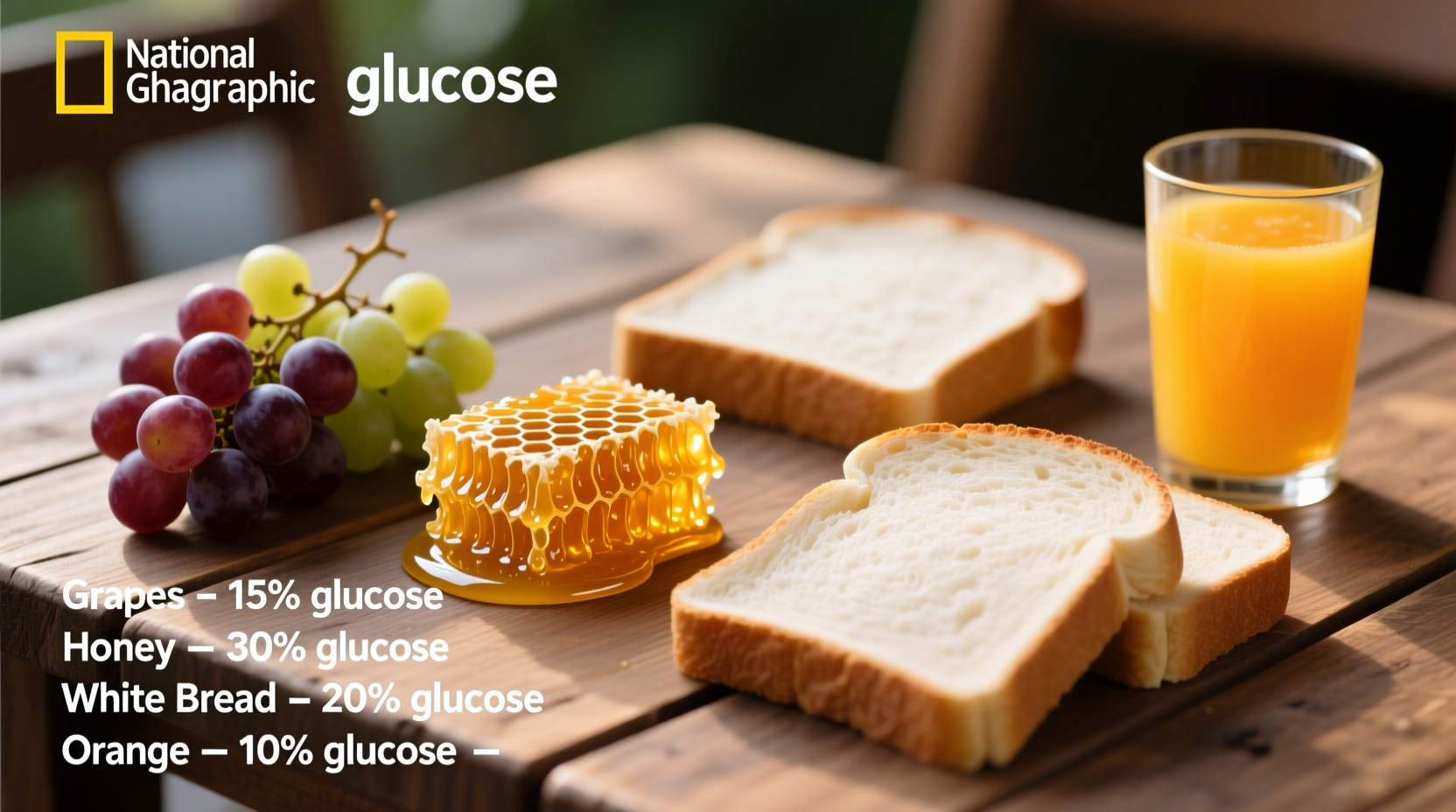When you search what food has glucose, you're likely trying to understand which foods naturally contain this essential sugar and how it affects your diet. Glucose serves as your body's primary energy source, but not all glucose-containing foods impact your health equally. This guide separates natural glucose sources from added sugars, helping you make informed choices whether you're managing diabetes, optimizing athletic performance, or simply eating healthier.
Understanding Glucose in Your Diet
Glucose differs from other sugars as the simplest form of carbohydrate your body can directly use for energy. While often confused with "sugar" generally, glucose appears naturally in many whole foods and gets added to processed items as dextrose or corn syrup. Your body breaks down complex carbohydrates into glucose during digestion, but certain foods contain glucose in its ready-to-use form.
The National Institutes of Health explains that natural glucose from whole foods comes packaged with fiber, vitamins, and minerals that slow absorption and prevent blood sugar spikes. Processed foods with added glucose lack these protective elements, causing faster glucose absorption that can strain metabolic health over time.
Natural Glucose Sources: What to Include in Your Diet
Fruits represent the richest natural sources of glucose. Unlike processed sugars, fruit glucose comes with fiber that moderates blood sugar response. The USDA FoodData Central database shows these top glucose-containing fruits:
| Food (100g) | Glucose Content | Fiber Content |
|---|---|---|
| Grapes | 15.5g | 0.9g |
| Mangoes | 7.7g | 1.6g |
| Bananas | 5.0g | 2.6g |
| Apples | 2.4g | 2.4g |
Vegetables also contribute glucose, though in smaller amounts. Corn contains approximately 2.5g glucose per 100g, while beets provide about 3.8g. Honey stands out as nature's most concentrated glucose source with 31g per 100g, though it should be consumed in moderation due to its high sugar density.

Added Glucose in Processed Foods
Food manufacturers frequently add glucose to products under various names. When checking labels, watch for:
- Dextrose (pure glucose)
- Corn syrup or high-fructose corn syrup
- Maltodextrin
- Modified food starch
These ingredients commonly appear in bread, cereals, sauces, and processed snacks. The U.S. Food and Drug Administration now requires "added sugars" to appear separately on nutrition labels, making it easier to identify products with added glucose.
Glucose Through History: A Nutritional Timeline
Our understanding of glucose has evolved significantly:
- 1747: Andreas Marggraf first isolated glucose from raisins
- 1884: Albrecht Kossel identifies glucose's role in metabolism
- 1921: Insulin discovery reveals glucose regulation mechanism
- 1980s: High-fructose corn syrup becomes prevalent in processed foods
- 2016: FDA mandates added sugar labeling on nutrition facts
This timeline shows how scientific understanding of glucose has shifted from basic identification to recognizing its complex role in metabolic health. The American Diabetes Association notes that modern processing techniques have separated glucose from its natural fiber matrix, changing how our bodies process this essential sugar.
Practical Guidance for Different Dietary Needs
Your approach to glucose-containing foods should vary based on health goals:
For Blood Sugar Management
If monitoring glucose levels, pair naturally sweet foods with protein or healthy fats. An apple with almond butter slows glucose absorption compared to eating fruit alone. The American Diabetes Association recommends focusing on whole food sources rather than eliminating glucose-containing foods entirely.
For Athletic Performance
Athletes benefit from strategic glucose timing. Consuming glucose-rich foods like bananas or dates 30-60 minutes before exercise provides readily available energy. Post-workout, combining glucose sources with protein enhances recovery. Research published in the Journal of the International Society of Sports Nutrition confirms that natural glucose sources support performance without the crash associated with processed sugars.
For General Wellness
For most people, glucose from whole foods poses no health risk. The key is distinguishing between natural glucose in context of whole foods versus isolated glucose in processed products. Focus on maintaining the fiber-glucose ratio found in nature rather than counting individual glucose grams.
Common Glucose Misconceptions Clarified
Many people confuse related terms. Glucose represents a single sugar molecule, while sucrose (table sugar) combines glucose and fructose. High-fructose corn syrup contains varying glucose-fructose ratios. "No sugar added" labels don't guarantee low glucose, as foods like fruit juice concentrate contain natural glucose.
Remember that your body needs glucose to function—the question isn't whether to consume glucose, but which glucose sources best support your health goals. Whole foods provide glucose alongside nutrients that optimize its metabolic processing.











 浙公网安备
33010002000092号
浙公网安备
33010002000092号 浙B2-20120091-4
浙B2-20120091-4